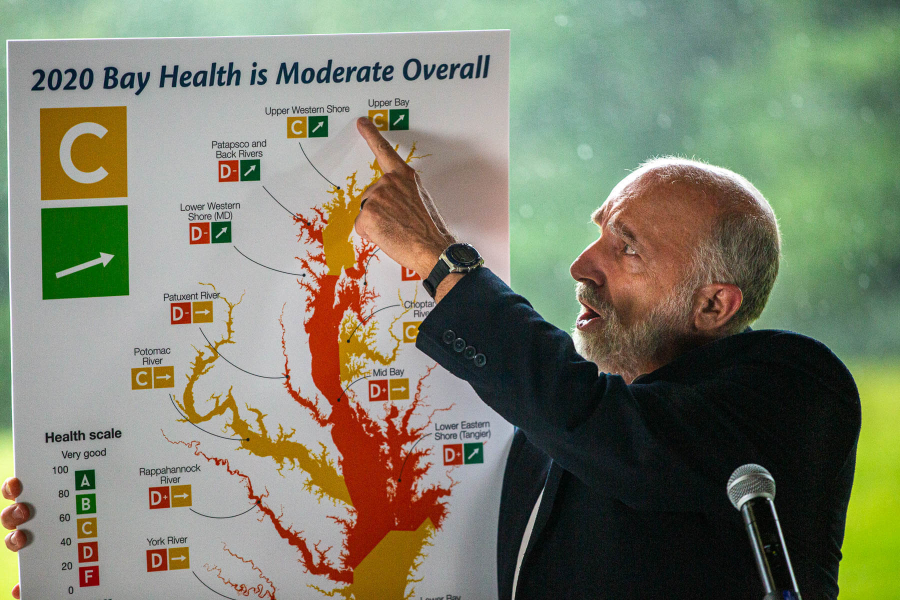Annual Chesapeake Bay Report Card notes slight improvement in estuary health
Bay is graded a ‘C’, while surrounding watershed remains stable, healthy at B-

Researchers from the University of Maryland Center for Environmental Science (UMCES) note that the Chesapeake Bay showed moderate health in 2020, improving from a C- in 2019 to a C, while the watershed encompassing the Bay remains in good health, earning a B-, the same score as last year.
UMCES’ annual report card produces a grade based on various ecosystem and social indicators. This is the second year that UMCES assessed the health of the entire Chesapeake Bay watershed, which is the 64,000 square miles of land and water that drain into the Bay, in addition to the Bay itself.
According to the report card, the Chesapeake Bay scored 45%, which is one percent higher than it received in 2019. Total nitrogen, a nutrient that when it enters the Bay in excess can cause dead zones to form, scored 64%, a strong improvement from 39% in 2019. Dissolved oxygen scores also improved, while Chlorophyll-a and total phosphorus scores declined. Water clarity, the benthic community (organisms that live at the bottom of the water like worms and clams) and aquatic grass scores decreased slightly as well.
“The health of the Bay continues to improve slightly over time, despite extreme weather, sea level rise and warming temperatures that work against environmental equity and progress to reduce pollution and habitat loss,” said U.S. Senator Ben Cardin of Maryland.
The overall Chesapeake Bay watershed scored 64%, with minor fluctuations from last year. Total nitrogen scored 78%, a slight decrease from 79%. Total phosphorus scored 59% and turbidity (how cloudy water is due to sediment pollution) scored 66%—a decline for both of 2%.
Unlike how the health of the Bay is assessed, the watershed score takes into account social indicators that impact the 18 million people who live in the region. This year, three new indicators were added to this category, including stewardship, heat vulnerability and walkability—which earned scores of 36%, 58% and 62%, respectively. The fourth new indicator, protected lands, tracks progress toward meeting the Chesapeake Bay Watershed Agreement goal of preserving an additional two million acres by 2025.
These new indicators note the evolution of the report card as UMCES aims for a clearer picture of the overall health of the Chesapeake watershed.
“UMCES scientists continue to lead the way on assessing not just the environment, but also the social and economic factors that influence ecosystem health. This year’s report card provides new insights in our journey of restoring the Chesapeake Bay.” said Dr. Peter Goodwin, president of the University of Maryland Center for Environmental Science.

Comments
There are no comments.
Thank you!
Your comment has been received. Before it can be published, the comment will be reviewed by our team to ensure it adheres with our rules of engagement.
Back to recent stories